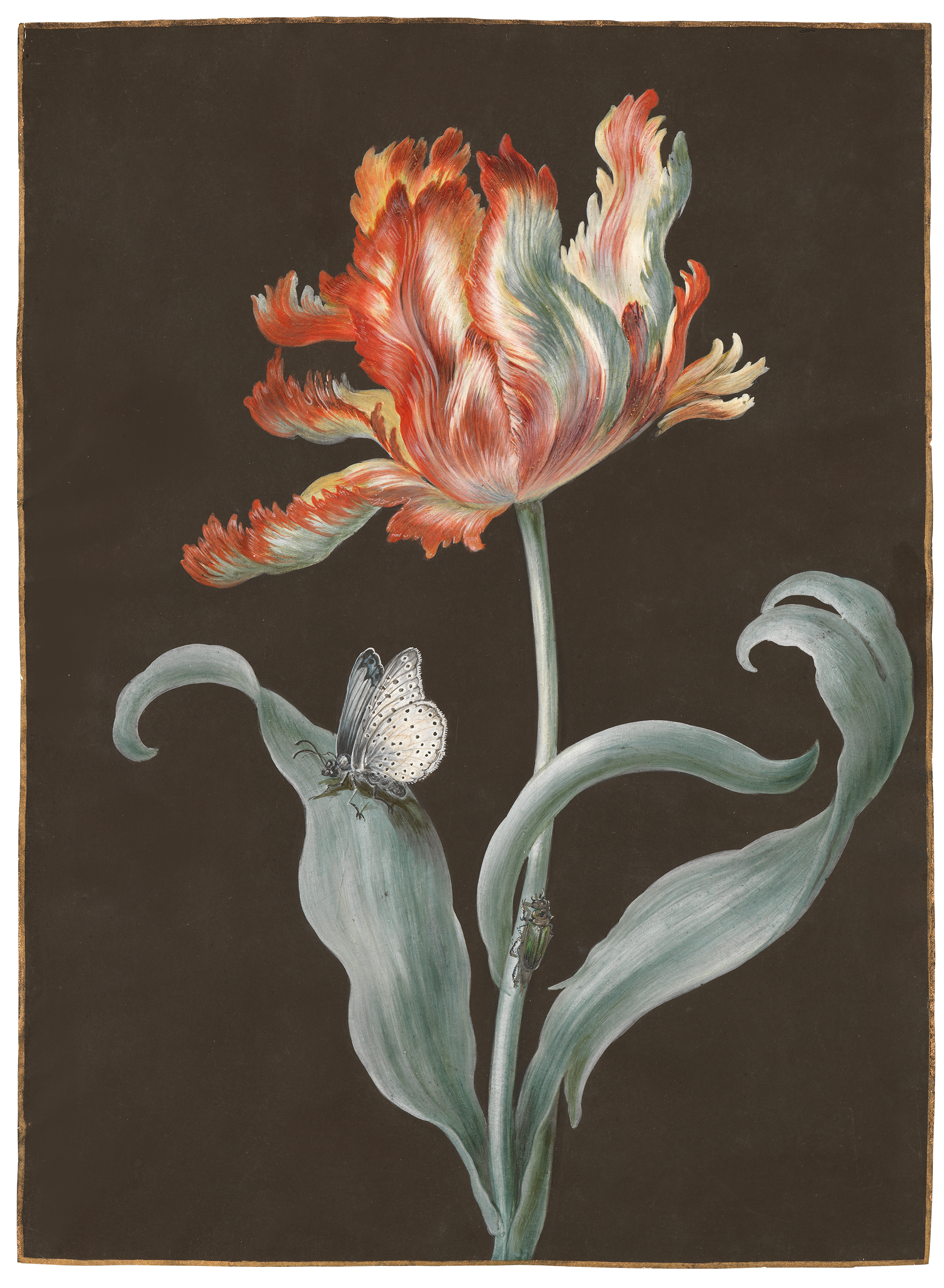
Dietzsch
Barbara Regina
Nuremberg 1706 — 1783
A Red, White and Yellow Parrot Tulip,
a Butterfly and a Beetle
Watercolour and gouache on vellum, edged with gold.
290 x 210 mm (11 7⁄16 x 8 1⁄4 in.)
During the 16th and 17th centuries, considerable progress in optics and the discovery of numerous new animal and plant species prompted a revival in interest in the living world. The medieval tradition of anthologies, which brought together images of plants that were sometimes more artistic than realistic, crept back into fashion. But in accordance with the rationalist spirit that culminated in the 18th century, precise description and systematic classification begin to compete with aesthetic vision. Thanks to the travels of naturalists, collections developed in tandem with publications describing animals, minerals and plants. The city of Nuremberg holds such a special place in this domain that in 1841, in his History of the Natural Sciences, Georges Cuvier wrote that the city – often celebrated for its engravers – “constantly produces figures of natural history.1“
Among the many painters specializing in natural sciences in Nuremburg, members of the Dietzsch family stand out for the beauty of their gouaches. Barbara Regina in particular, is as noteworthy for her independent personality as the exceptional quality of her works. Even though her work was occasionally used by publishers, for example the bird paintings reproduced in Adam Ludwig Wirsing’s Sammlung leistens deutscher Vögel (Collection of German Birds, Nuremberg, 1772- 1777, 2 vols., 50 illustrations) or some of her flower paintings published in Jacob Trew’s Hortus Nitidissimis, (The Neatest Garden, Nuremberg, 1750 -1786), her gouaches are not considered as illustrative works.
Produced to a standard size of either 29 x 21 or 35 x 27 cm and executed in gouache on vellum, these works display plants accompanied by insects on a black background, framed by a fine gold line (Fig. 1) – intended principally for amateur botanical collectors and purchased in pairs or groups to cluster on walls in the effect of an indoor garden. The most passionate collectors most likely presented them together with minerals, animals and insects from their collections. Others eventually preferred to amass and bind the drawings in book form, thus creating their own anthologies, which also helped with their conservation.
These gouaches that were particularly sought after and esteemed in their time highlight the beauty of the subjects without sacrificing scientific precision. The black background helps focus the eye and encourage observation of the plant itself, while exalting in the velvety leaves, silkiness of the petals and brilliance of colour. It also seems to gather and protect the flower like a black velvet case guarding its jewels. Glorifying the beauty of creation, these works were compared by Heindrun Ludwig to physico-theology, then widespread among Protestants in Germany.2 This thought – so present in philosophical discussions of the time – assimilates the world to a work of art whose perfection and harmony provide proof of the existence of a divine creator. Through their technical perfection, Barbara Regina Dietzsch’s works are intended to celebrate the creation and divine design.
- Georges Cuvier, Histoire des sciences naturelles depuis leur origine jusqu’à nos jours, Paris, Fortin, Masson et Cie, 1841, Tome II, p. 207.
- Heindrun Ludwig in Delia Gaze, Dictionary of Women Artists, London, Chicago, Fitzroy Deaborn, 1997, Vol. 1, p. 459.

